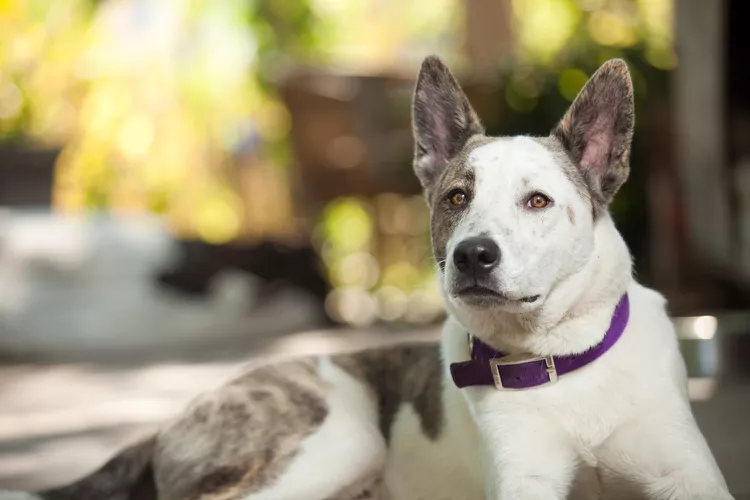Lead Poisoning in Dogs

Lead is a dangerous substance that if ingested by dogs can cause a variety of serious consequences including anemia, gastrointestinal disorders, lethargy and anorexia, and neurologic or behavioral changes. While infrequent, lead poisoning can be treated if diagnosed quickly and managed carefully.
What Is Lead Poisoning?
Lead, a toxic substance that has become ubiquitous with paint from older houses, is a metal of many properties. While not as commonly used in products as it was added to a variety of household products in the early part of the 20th century.
When orally ingested lead is most dangerous to dogs but it is also able to be absorbed by coming into contact with skin or being inhaled. Puppies and younger dogs can be prone to investigating by licking and biting new objects can be especially vulnerable to lead poisoning. If there is construction being done on an older home there may be layers of old lead paint and lead containing plaster unearthed. Curious pups can have their curiosity get the best of them and accidentally consume lead by chewing on debris near the renovation site. While paint is the most common, and most well-known, source of lead poisoning it can also be found in toys, batteries, golf balls, ammunition, soldering equipment, fishing sinkers, and ceramic glazes.
Signs of Lead Poisoning
Symptoms of lead poisoning can cause sudden vomiting and diarrhea, lethargy, and a decreased appetite. These signs can be acute or be noticed more slowly depending on the level of exposure. Neurological signs include walking uncoordinated (ataxia), seizures, tremors, and other sudden behavioral changes like hiding and aggression.
Causes of Lead Poisoning
Most commonly a dog will ingest lead particles by chewing or licking a lead item. Pets that are romping in old construction sites could also be exposed to lead and ingest lead particles by grooming at a later point. When lead enters the body it is primarily absorbed by the gastrointestinal tract. The acidity of the stomach alters the lead and increases its absorption even further.
Diagnosing Lead Poisoning
If you suspect your pet has consumed a lead –containing item take your dog to the nearest veterinary emergency room. The medical care and hospitalization your pet would need would be done at a 24 hour facility. Going to an emergency hospital would be the fastest way to make sure your pet is treated.
The biggest part to help your veterinarian determine why your pet is acting sick is giving a detailed history and amount of lead product your pet was exposed to or ingested. Mentioning if you have had recent home renovations can be a critical detail to help determine if your pet had lead exposure. Informing your vet if you suspect your dog ingested lead containing substances and the amount will be important as well. The vet will start with a physical exam and pair it with the history given. They may recommend x-rays, bloodwork and urinalysis. One positive aspect of lead is that being a metal, it can be visualized on x-ray if a pet consumed a solid object like a fishing sinker.
Treatment varies on the amount ingested and signs of illness your pet is displaying. For some pets that may have life threatening signs such as seizures, the veterinarian will work to stabilize them as much as possible. In other more stable cases, your vet may determine if it is possible to remove the source of lead either by making the pet vomit, performing endoscopy or surgery if warranted. Even if the lead object is removed your pet will still need supportive care that typically would include fluids, anti-nausea and anti-vomiting medications, and muscle relaxants or anti-seizure medications if indicated. Chelating medications and some antacids can help to bind the metal in the body so the toxicity does not increase. These medications are typically used in an emergency veterinary hospital setting and have to be used very carefully. The veterinarian can order specific lab tests that look at the blood concentration level of lead but these tests are typically not run in the hospital and have to be sent to an outside laboratory.
An honorable mention to clarify the dangers of lead extends to dogs that eat wildlife that had been shot with shotgun pellets. If you have an active dog that roams where hunters have been, always be cautious if your pup starts to chew on a freshly found carcass. Ingesting those shotgun pellets will cause poisoning in a pet as well.
Ultimately, the best way to tackle a lead poisoning emergency is to be proactive and know what materials your pup can get into. Not only is it safer for all pets, but since lead is such a known toxin, pet owners have to be aware of what may be inside their own home.